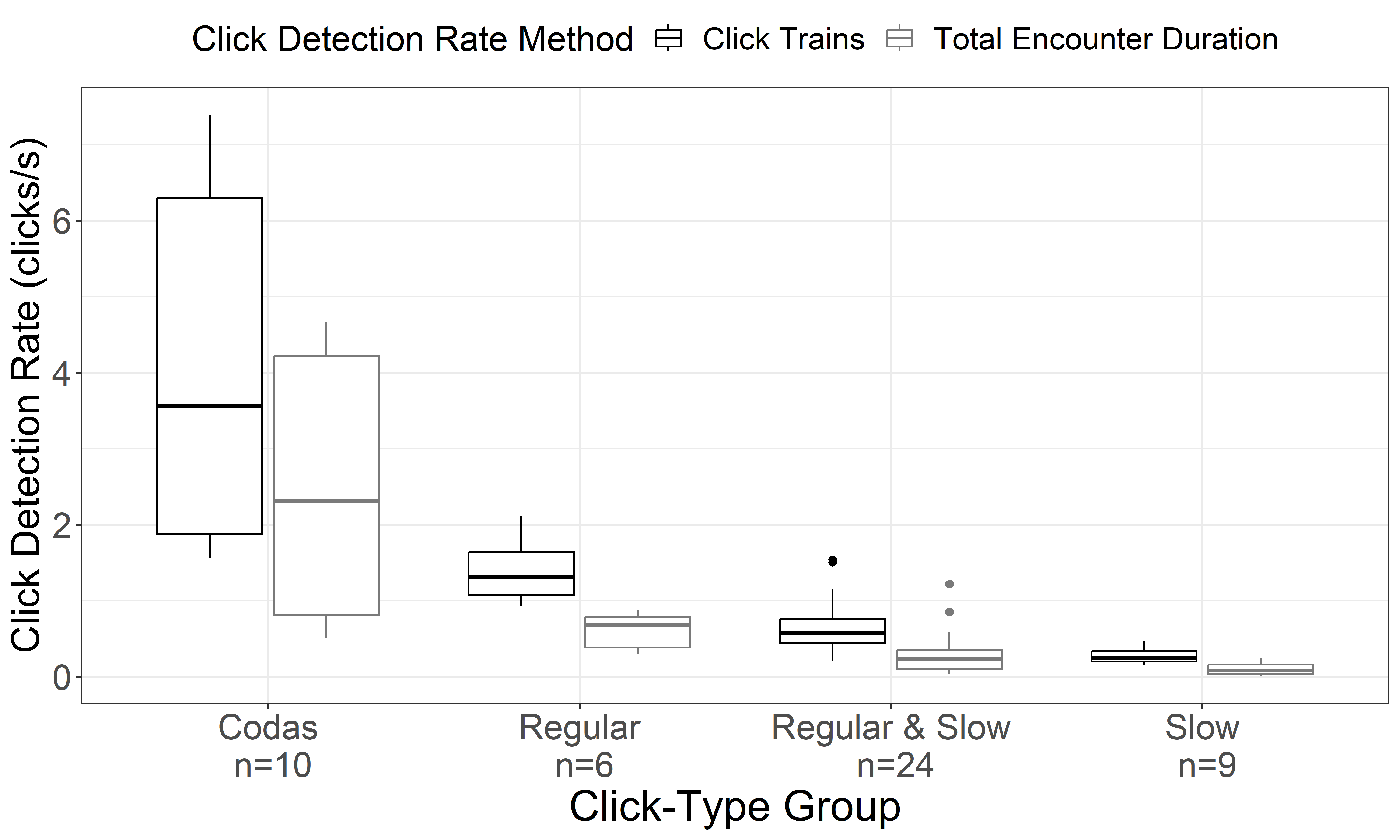Home > Research+Applications > Research Highlights > Cetacean Research in the Pacific Islands Region
Cetacean Research in the Pacific Islands Region Project
Passive acoustic monitoring is used for detecting and monitoring cetaceans as they frequently produce sound while spending the majority of their lives underwater. Counting the sounds of deep-diving cetaceans (acoustic cues) instead of the actual animals is an alternative way to estimate animal density, the number of animals in a given area. This is particularly useful since deep-divers can spend an hour below the surface while foraging, causing them to be missed by visual observers. However, cue-based density estimation requires knowing the average acoustic cue production rate of the animals to convert the total acoustic cues to animal density. For example, sperm whales produce echolocation clicks as their acoustic cues when foraging and socializing, but limited information exists about their click production rates in the central North Pacific Ocean. Therefore, we used existing towed hydrophone array data to calculate the first sperm whale click rates for this region and examined the differences in click rates based on the type of click detected (foraging or social clicks), the location of the whales, the distance of the whales from the array, and the number of whales in the group. Click rates varied the most depending on the click type, ranging between 0.11 clicks/s for slow clicks produced by single males up to 2.48 clicks/s for social clicks produced by larger groups. Results also showed a positive relationship between click rates and the number of whales in a group, which will help inform future studies to predict the number of whales in a group using only acoustic data. Overall, calculating sperm whale click rates and understanding the factors affecting them provides important information towards acoustic-based sperm whale density estimates in the central North Pacific Ocean.
Barkley Y.M., Merkens, K.P.B., Wood, M., Oleson, E.M., & Marques, T.A. (2024). Click detection rate variability of central North Pacific sperm whales from passive acoustic towed arrays. Journal of the Acoustical Society of America, 155(4), 2627-2635.

Click detection rates of sperm whales differ based on their behavioral state, with the highest rates produced by social groups communicating using codas. Regular clicks are produced when sperm whales forage and slow clicks are produced only by male sperm whales, both click types resulting in lower click detection rates.

Dr. Yvonne Barkley

Click detection rates of sperm whales differ based on their behavioral state, with the highest rates produced by social groups communicating using codas. Regular clicks are produced when sperm whales forage and slow clicks are produced only by male sperm whales, both click types resulting in lower click detection rates.
Cetacean Research in the Pacific Islands Region Project
Passive acoustic monitoring is used for detecting and monitoring cetaceans as they frequently produce sound while spending the majority of their lives underwater. Counting the sounds of deep-diving cetaceans (acoustic cues) instead of the actual animals is an alternative way to estimate animal density, the number of animals in a given area. This is particularly useful since deep-divers can spend an hour below the surface while foraging, causing them to be missed by visual observers. However, cue-based density estimation requires knowing the average acoustic cue production rate of the animals to convert the total acoustic cues to animal density. For example, sperm whales produce echolocation clicks as their acoustic cues when foraging and socializing, but limited information exists about their click production rates in the central North Pacific Ocean. Therefore, we used existing towed hydrophone array data to calculate the first sperm whale click rates for this region and examined the differences in click rates based on the type of click detected (foraging or social clicks), the location of the whales, the distance of the whales from the array, and the number of whales in the group. Click rates varied the most depending on the click type, ranging between 0.11 clicks/s for slow clicks produced by single males up to 2.48 clicks/s for social clicks produced by larger groups. Results also showed a positive relationship between click rates and the number of whales in a group, which will help inform future studies to predict the number of whales in a group using only acoustic data. Overall, calculating sperm whale click rates and understanding the factors affecting them provides important information towards acoustic-based sperm whale density estimates in the central North Pacific Ocean.
Barkley Y.M., Merkens, K.P.B., Wood, M., Oleson, E.M., & Marques, T.A. (2024). Click detection rate variability of central North Pacific sperm whales from passive acoustic towed arrays. Journal of the Acoustical Society of America, 155(4), 2627-2635.

